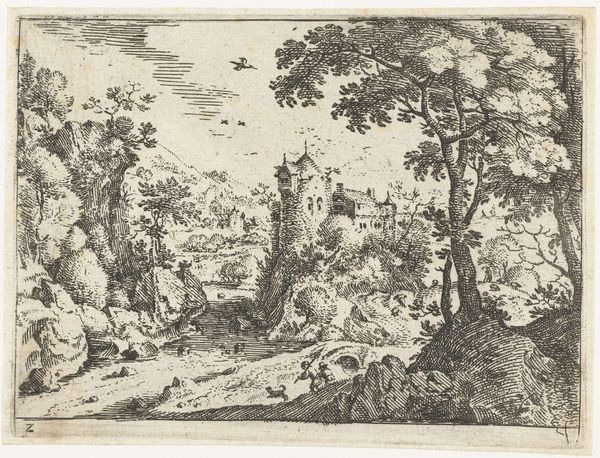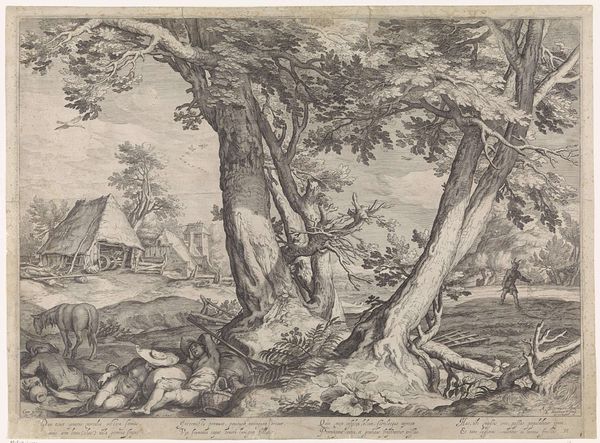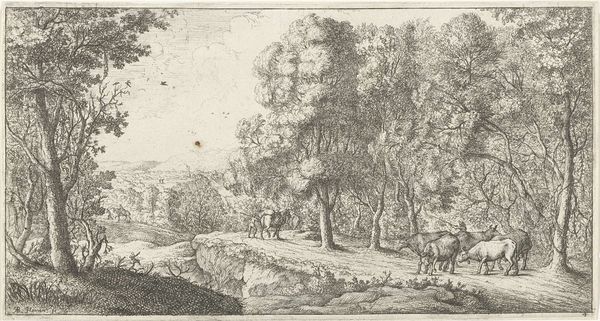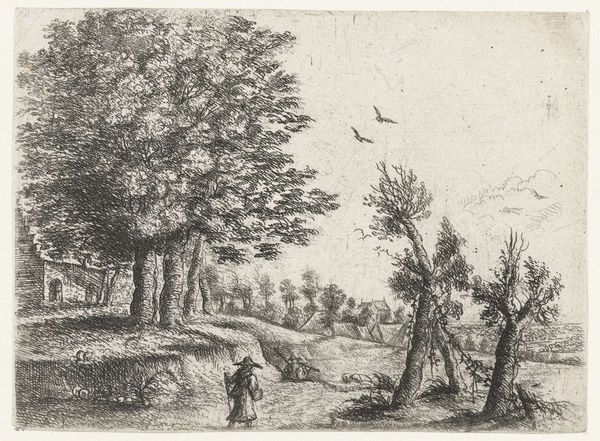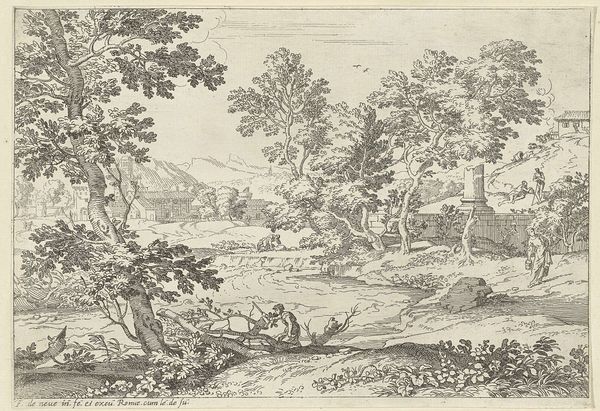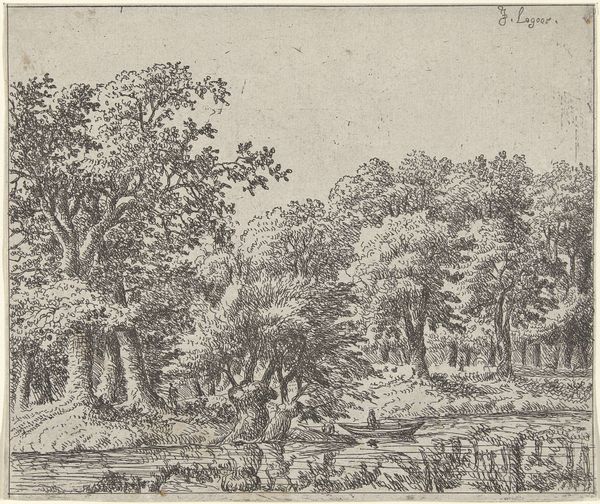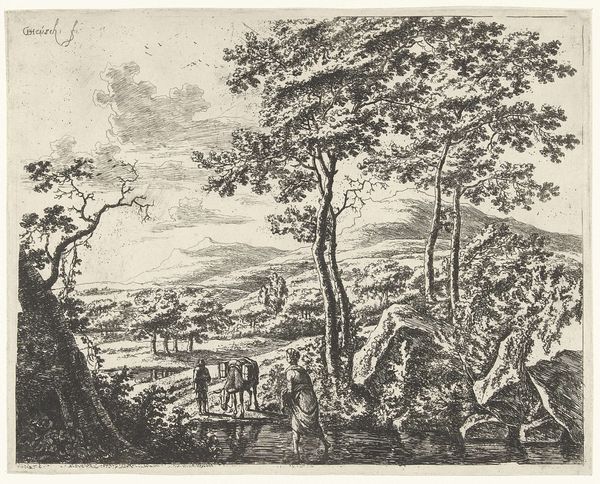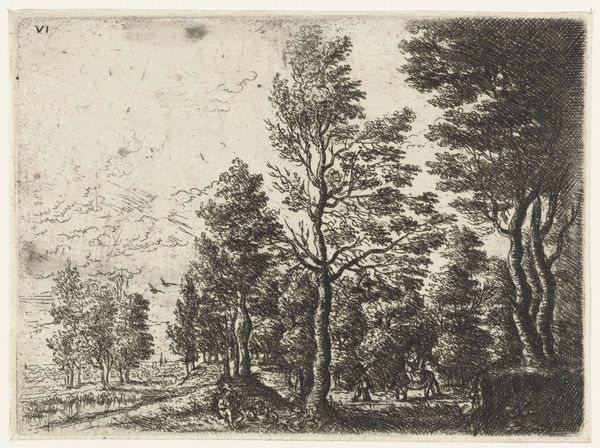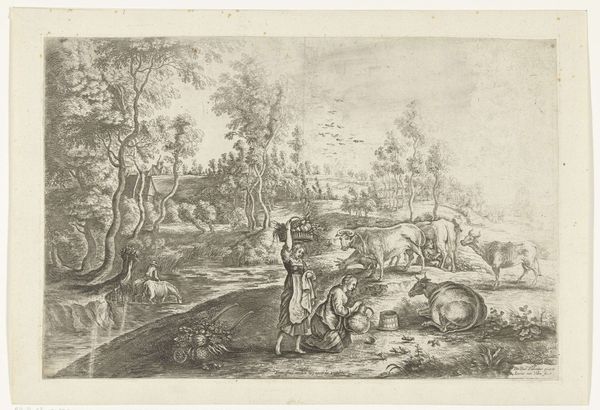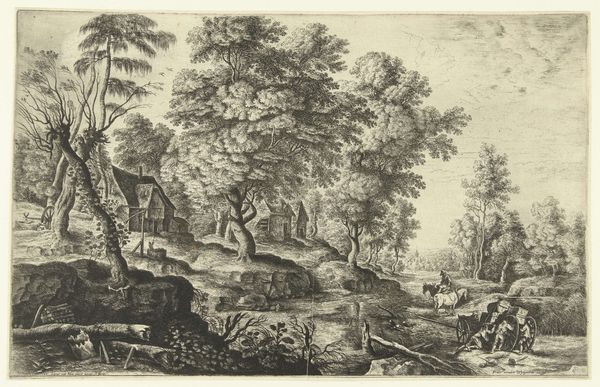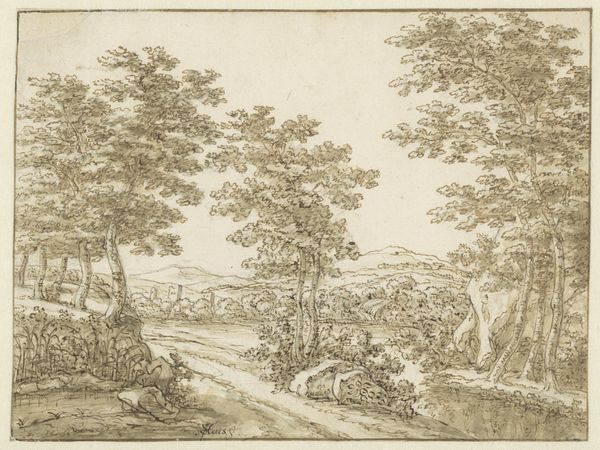
print, etching, engraving
#
dutch-golden-age
# print
#
etching
#
old engraving style
#
landscape
#
river
#
line
#
natural palette
#
engraving
#
realism
Dimensions: height 69 mm, width 94 mm
Copyright: Rijks Museum: Open Domain
Curator: Here we have Jan Carel Immenraet's "Rivierlandschap," created between 1662 and 1663. It is an etching and engraving on paper. Editor: There’s something immediately tranquil about this piece. The soft lines and shading create an idyllic and rather bucolic scene. The figures seem small and content, dwarfed by the expansive landscape. Curator: The use of line is particularly striking. Notice how Immenraet varies the thickness and density to simulate light and shadow. The tree to the right, for example, is rendered with a dense network of lines, suggesting depth and volume. Look at the delicate wisps of clouds, contrasting beautifully with the precise foliage. Editor: I’m drawn to the societal context implied here. During the Dutch Golden Age, there was an increasing focus on the merchant class acquiring property, including rural estates. Prints like this, circulated widely, would visually reinforce the cultural shift toward celebrating domesticity and land ownership. We see a celebration of the rural lifestyle being circulated broadly through prints such as this, democratizing a certain version of it to a wider populace. Curator: An intriguing perspective. I find the compositional arrangement, the balance between the densely shaded foreground and the more open background, creates a harmonious spatial depth. The artist subtly guides your eye through the landscape. Note the clever juxtaposition of man and nature within a carefully crafted frame, a common trope of Dutch landscape art of the time. Editor: Yes, and thinking about circulation, one can imagine how these images functioned within society. As relatively inexpensive art forms, they played a critical role in shaping perception. Landscapes like this, imbued with a certain serenity, might act as visual propaganda for a more pacified population increasingly accepting its relationship with a wealthy oligarchy. Curator: I can appreciate that point. Ultimately, I believe the enduring power of the artwork comes down to its mastery of line and tone. Editor: And perhaps its skillful dissemination that entrenched a particular cultural perspective. It’s interesting to see it under a critical gaze in our modern context.
Comments
No comments
Be the first to comment and join the conversation on the ultimate creative platform.
